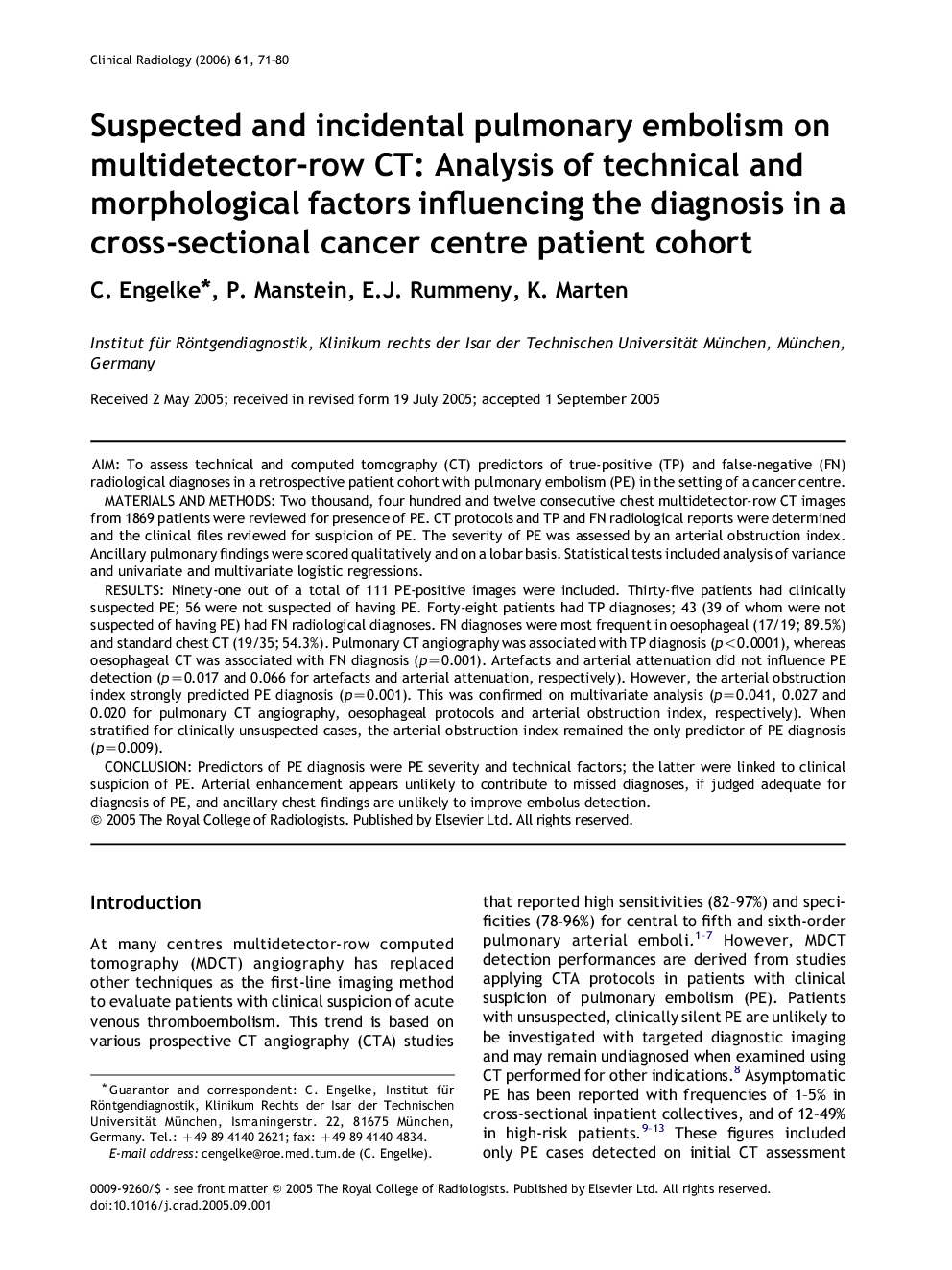| Article ID | Journal | Published Year | Pages | File Type |
|---|---|---|---|---|
| 3984032 | Clinical Radiology | 2006 | 10 Pages |
AIMTo assess technical and computed tomography (CT) predictors of true-positive (TP) and false-negative (FN) radiological diagnoses in a retrospective patient cohort with pulmonary embolism (PE) in the setting of a cancer centre.MATERIALS AND METHODSTwo thousand, four hundred and twelve consecutive chest multidetector-row CT images from 1869 patients were reviewed for presence of PE. CT protocols and TP and FN radiological reports were determined and the clinical files reviewed for suspicion of PE. The severity of PE was assessed by an arterial obstruction index. Ancillary pulmonary findings were scored qualitatively and on a lobar basis. Statistical tests included analysis of variance and univariate and multivariate logistic regressions.RESULTSNinety-one out of a total of 111 PE-positive images were included. Thirty-five patients had clinically suspected PE; 56 were not suspected of having PE. Forty-eight patients had TP diagnoses; 43 (39 of whom were not suspected of having PE) had FN radiological diagnoses. FN diagnoses were most frequent in oesophageal (17/19; 89.5%) and standard chest CT (19/35; 54.3%). Pulmonary CT angiography was associated with TP diagnosis (p<0.0001), whereas oesophageal CT was associated with FN diagnosis (p=0.001). Artefacts and arterial attenuation did not influence PE detection (p=0.017 and 0.066 for artefacts and arterial attenuation, respectively). However, the arterial obstruction index strongly predicted PE diagnosis (p=0.001). This was confirmed on multivariate analysis (p=0.041, 0.027 and 0.020 for pulmonary CT angiography, oesophageal protocols and arterial obstruction index, respectively). When stratified for clinically unsuspected cases, the arterial obstruction index remained the only predictor of PE diagnosis (p=0.009).CONCLUSIONPredictors of PE diagnosis were PE severity and technical factors; the latter were linked to clinical suspicion of PE. Arterial enhancement appears unlikely to contribute to missed diagnoses, if judged adequate for diagnosis of PE, and ancillary chest findings are unlikely to improve embolus detection.
